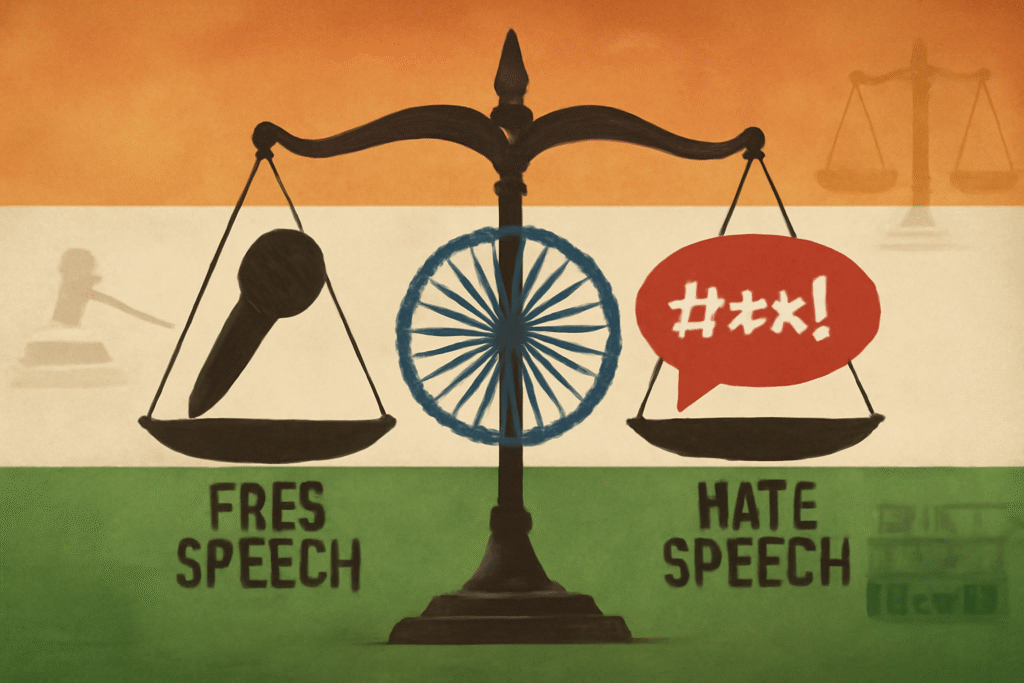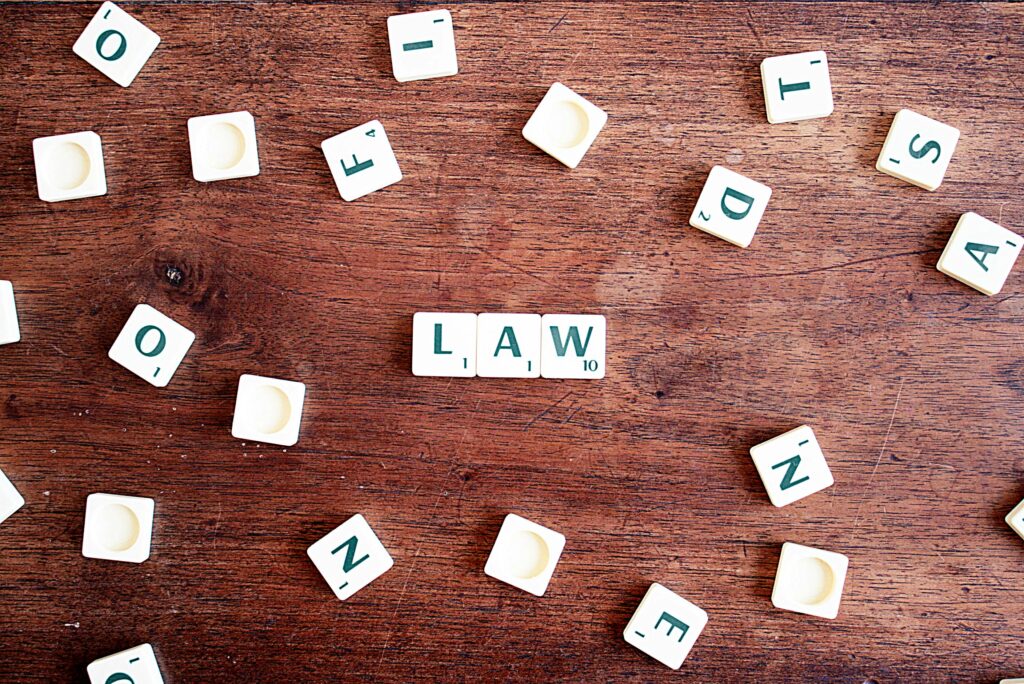Published on 25th June 2025
Authored By: Gayatri Narayanan
Government Law College, Chengalpattu
Citation: S. R. Bommai v. Union of India, [1994] AIR 1918, 1994 SCC (3) 1
Court: Supreme Court of India (9-judge bench)
Bench: 9-judge bench: Judges: Kuldip Singh, P.B. Sawant, K. Ramaswamy, S.C. Agarwal, Yogeshwar Dayal, B.P. Jeevan Reddy, S.R. Pandian, A.M. Ahmadi, and J.S. Verma.
Date of Judgment: 11th March 1994.
Facts:
- R. Bommai appointed Ramakrishna Hegde as Karnataka’s chief minister in 1988. A lawmaker and 19 other MLAs were unrestricted, causing internal opposition within the Bommai-led Janata Dal administration. Thus, there were allegations that the administration had lost its majority in the legislature. Karnataka Governor P. Venkatasubbaiah conversed with the president that Bommai’s government was no longer backed by the majority.
- Based on the Governor’s report, the President dissolved the state legislative assembly and executed President’s Rule in Karnataka on April 21, 1989, despite Bommai’s demand to validate his majority through a floor test in the assembly. The Governor rejected this request and suggested the government’s notice under Article 356 of the Constitution.
- Apprehensions over the federal government’s abuse of Article 356 to unilaterally dissolve democratically elected state governments were raised by dismissals of state administrations that took place in Madhya Pradesh, Himachal Pradesh, Rajasthan, and Nagaland.
- R. Bommai queried the use of President’s Rule, claiming that the dismissal was unlawful, politically oriented, and in defiance of the Constitution’s federal principles. He argued that the majority should be challenged on the assembly floor rather than by the governor, who he said was biased in his report.
- After the High Court’s decision went against Bommai’s requests, he appealed to the Supreme Court, which led to a nine-judge bench to rule on the justiciability of such proclamations, the extent and bounds of the central government’s authority under Article 356; and the legitimacy of the President’s Rule in Karnataka and other states.
Issues:
In S. R. Bommai v. Union of India (1994), the Supreme Court analysed several important constitutional questions about the use of the President’s Rule under Article 356 of the Indian Constitution:
- Whether the President’s satisfaction, which acts as the ground for the imposition of the President’s Rule, is open to judicial review or if it is absolute and beyond the scope of judicial review.
- Whether the president can dissolve a state administration without restriction or if this authority is subject to parliamentary and relevant material consent.
- If a proclamation made under Article 356(3), after being authorized by both Houses of Parliament, may still be disputed in court, and what would happen if it were declared invalid.
- Can the President dissolve the state legislature before legislative confirmation of the proclamation, and is this decision revocable if the proclamation is overturned?
- Can the President’s Rule be levied for political purposes, or is it restricted to occurrences in which the state’s constitutional system has failed?
Arguments:
Arguments by the Petitioners (S. R. Bommai and Others):
- Floor Test Denied: By averting S. R. Bommai from representing his majority on the Assembly floor, the governor acted arbitrarily. The petitioners opposed that a floor test, rather than the governor’s arbitrary judgment, is the proper constitutional method for determining majority support.
- Inadequate Information: The Governor’s proposal for President’s Rule was established based on incomplete and unconfirmed data. The petitioners argued that there was no concrete evidence to back up the declaration that the state government could not function under the Constitution.
- Political Motivation and Mala Fide Action: The goal of imposing President’s Rule was to consolidate power and undermine state governments led by the opposition. According to the petitioners, the federal government misused Article 356 for political ends.
- Federalism Violation: The federal structure and essence of the Constitution are undermined when state governments are arbitrarily dismissed. The petitioners stressed that such measures violate cooperative federalism’s principles and deplete state authority.
- Non-Disclosure of Material: It was questioned to evaluate the legality of the action since the Union administration would not reveal the information on which the President’s Rule was applied. The petitioners said that judicial review and responsibility depended on transparency.
Arguments by the Respondents (Union of India):
- Subjective Presidential pleasure: According to the federal government, the President’s satisfaction under Article 356 is arbitrary and immune to judicial scrutiny. They argued that courts cannot scrutinize the sufficiency of the information or advice given, and that the President acts on the Council of Ministers’ advice.
- Non-Secular Activities Justify Dismissal: According to the respondents, a state government may execute the President’s Rule under Article 356 if it breaches the constitution or participates in non-secular activities.
- Judicial Review Limits: According to the Union of India, courts are impotent in evaluating the quality of the information presented to the President or the Council of Ministers’ endorsements. If there is any judicial review, it ought to be very restricted and should not go as far as the president’s pleasure.
- Constitutional Provisions provide Central Intervention: According to the respondents, Article 356 was created explicitly to provide central interference in extraordinary circumstances where a state’s constitutional apparatus fails.
The Supreme Court’s historic ruling on the ambit and constraints of Article 356 and the defence of federalism in India was the result of these arguments framing the main legal and constitutional issues before the court.
Judgment
The Supreme Court delivered a landmark judgment with seven key rulings that reinterpreted India’s federal structure and curtailed misuse of Article 356:
- Presidential Proclamation Judicial Review:
The Court ruled that to restrict arbitrariness, presidential proclamations made under Article 356 must be examined by judges. Courts cannot evaluate the Council of Ministers’ recommendation (covered by Article 74(2)), but they can investigate whether the President’s satisfaction was founded on appropriate information.
ii. Mandate for Floor Tests:
The Legislative Assembly’s floor test, not only the governor’s arbitrary report, ought to be utilized to demonstrate a loss of majority. It is against constitutional standards to deny this chance.
iii. Limitations on the Dissolution of the Assembly:
Parliament must validate the President’s Rule before the state assembly may be dissolved. If the proclamation is subsequently declared unconstitutional, the dispersed legislature is automatically restored. - Secularism as a Fundamental Characteristic:
Since secularism is a fundamental principle of the Indian Constitution, non-secular state government activities (such as encouraging religious exclusivity) might support Article 356’s reference.
v. State Autonomy and Federalism:
States have direct sovereignty from the Constitution and are not referred to the Centre. Cooperative federalism is undermined when state governments are arbitrarily dismissed. - Transparency of Materials:
Even though ministerial advice cannot be disclosed under Article 74(2); courts may request the President’s material grounds for approval to determine its legitimacy. Since there is no hard proof, the edict is illegal.
vii. Use of Article 356 Guidelines:
- Warning Mechanism: Before using Article 356, the Centre must inform the state government and give them a fair amount of time (usually a week) to address any issue.
- Parliamentary Approval: Within two months, proclamations must be approved by parliament. The proclamation is void if permission is not attained.
- Malafide Prohibition: Politically motivated declarations that target states run by the opposition, for example, are unlawful.
Significance
- Federalism landmark: The S. R. Bommai case, a pillar of Indian constitutional law, decisively established the federal system by reaffirming that state governments are not subservient to the central government but rather draw their power from the Constitution. This restrained governmental overreach advanced the idea of cooperative federalism.
- Restraint on Abuse of Article 356: The ruling put a stop to the federal government’s recurrent and politically motivated use of Article 356 to remove state governments. It made it clear that the President’s Rule may only be functional in extraordinary situations, not for political reasons or based on the governor’s opinion.
- Judicial Review and Accountability: The Supreme Court ruled that judicial review applies to the President’s Rule’s enforcement. Such proclamations can be overturned if they are determined to be arbitrary, dishonest, or founded on unrelated reasons, guaranteeing the responsibility of the central authority.
- The Floor Test as the Final Test: The Court decided that the majority of a state government must be demonstrated on the Assembly floor rather than in the governor’s report. This notion preserves democratic standards and forbids arbitrary dismissals.
- Basic Structure Doctrine: According to the basic structure doctrine, which was utilized in the ruling, activities that go against the fundamental principles of the Constitution, such as democracy and secularism, may warrant the deployment of Article 356—but only under very specific conditions.
- Durable Precedent: The case continues to be a keystone, persuading relations between the Centre and the State and reaffirming the importance of constitutional procedures over administrative authority. In Indian political and constitutional history, it is among the most often quoted rulings.
R. Bommai v. Union of India changed the constitutional landscape by defending the integrity of India’s democratic institutions by guaranteeing that federalism, democracy, and the rule of law be safeguarded against variable central interference. In its reasoning, the Court examined the constitutional framework governing federalism and Centre-State relations. It relied on the precedent set in the State of Rajasthan v. Union of India[1] to interpret Article 356, reinforcing the principle that the imposition of President’s Rule must not be arbitrary and is subject to constitutional limitations.
Conclusion
A turning point in Indian constitutional history, the S. R. Bommai case (1994) altered the distribution of power between the federal government and the states. The Supreme Court limited the abuse of Article 356 as a political instrument and strengthened cooperative federalism as a fundamental democratic tenet by enforcing stringent judicial safeguards on its application. The ruling emphasized that state governments are independent bodies with powers directly drawn from the Constitution and are not answerable to the federal government. India’s federal fabric and democratic culture are still safeguarded by its tenets, which include mandated floor tests, judicial scrutiny of executive decisions, and conformance with the fundamental structure concept. The decision still serves as a safeguard against authoritarian overreach today, guaranteeing that the rule of law, not political expediency, governs the constitutional machinery.
References
[1] 1977 AIR 1361, 1978 SCR (1) 1




